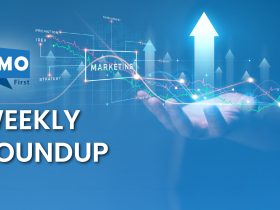As marketing channels, technologies and customer expectations multiply, internal fragmentation has become a hidden barrier to growth. Many organizations still operate with siloed marketing functions, brand, digital, product, content and field marketing running parallel agendas with limited coordination. The result is duplicated effort, inconsistent messaging and missed revenue opportunities.
Cross-functional marketing is becoming a top priority for growth companies. By aligning teams around shared goals, data and cadence companies can deliver more cohesive customer experiences and better campaign results. This article looks at how marketing leaders are re-architecting collaboration across roles, functions and tools.
The Cost of Marketing Silos
Even in mature marketing organizations, siloed execution is common. Product marketers may launch campaigns without alignment from content creators. Brand teams may develop messaging that is inconsistently applied across demand generation and social media. Field marketers may tailor campaigns without integrating corporate insights or scalable assets.
This disjointed execution leads to multiple inefficiencies:
- Inconsistent buyer messaging that confuses customers across touchpoints.
- Redundant workstreams that consume time and budget without added value.
- Delayed feedback loops between campaign execution and strategic pivots.
- Fragmented data reporting that limits visibility into true performance.
Over time, these problems slow pipeline velocity. They lower conversion rates and hurt brand equity. In a competitive landscape, lack of internal alignment directly affects external outcomes.
Cross-Functional Alignment as a Growth Lever
Cross-functional marketing is more than teamwork; it’s a strategic way to operate. It unites key marketing roles with common goals, coordinated workflows, and shared responsibility. Teams work as a connected system. They don’t manage channels or deliverables alone. Instead, they align with business priorities.
This alignment benefits the entire marketing lifecycle:
- Strategy development incorporates inputs from sales, product and customer
- Messaging is consistent from top-of-funnel awareness to post-sale engagement.
- Campaigns are timed across functions for maximum reach and impact.
- Measurement frameworks reflect unified goals rather than departmental KPIs.
When marketing teams align internally, they cut down on operational friction. This helps them boost the impact of their external communications. The result is more than just campaign efficiency. It also leads to faster learning and smarter decisions.
Also Read: From Gender Bias to Boardroom Presence: The Reality of Female CMOs Breaking Stereotypes
Shared Planning and Execution Rhythms
A key to cross-functional success is a shared planning cadence. Many organizations now use quarterly or monthly schedules. Teams collaborate to agree on campaign calendars, content priorities, launch dates, and tactics. These meetings help establish dependencies, avoid duplication and clarify ownership.
Workflows are being mapped more intentionally. For example, brand sets the messaging architecture which feeds into content development. Digital executes targeted distribution. Demand gen tracks conversion while marketing ops measures lift across key segments. Each role contributes at the right stage, reducing confusion and speeding execution.
Marketing ops teams are often taking the lead in coordinating these rhythms. They ensure tools are integrated, project management platforms are standardized and performance dashboards provide a single view of progress. Their role is evolving from support function to orchestration hub.
Aligning Teams through Shared Data and KPIs
Fragmentation is often caused by conflicting success metrics. Content teams optimize for views or downloads. Campaign teams focus on MQLs. Sales wants pipeline. These misaligned KPIs prevent unified decision-making and local optimization over enterprise performance.
Leading companies address this by having shared KPIs. These may include:
- Pipeline contribution by campaign theme.
- Account engagement across multiple channels.
- Content impact on buyer progression.
- Marketing influence on revenue growth.
Data access is also standardized. Instead of each team building their own dashboards, companies invest in centralized reporting environments that provide role-based insights from a single source of truth. This creates transparency, builds trust across teams and enables faster pivots when strategies underperform.
Strengthening Sales Collaboration through Marketing Unity

Marketing alignment sets the stage for sales alignment. When marketing is in sync, sales gets consistent messaging, better quality leads and more targeted enablement assets. Consistency builds trust and shortens sales cycles.
Cross functional marketing also makes it easier to translate buyer insights into sales strategy. If campaign data shows high engagement from a certain industry or persona, product marketing can work with field teams. They can adjust messaging quickly.
Meanwhile, demand gen can help with outreach to specific segments. Responding to new trends gives you a competitive edge. Moreover, a unified marketing function allows sales to focus on the opportunities that are most likely to close. Lead scoring models, engagement dashboards and campaign feedback are all more accurate when informed by complete cross functional data. This aligns sales and marketing not just tactically but strategically.
Enabling Faster Feedback Loops and Iteration
In high growth environments, speed is critical. Cross-functional alignment accelerates feedback loops by reducing silos between content creation, campaign execution and performance analytics. When a campaign underperforms teams can collaborate to identify root cause, iterate messaging and redeploy assets in less time.
This is especially valuable in multichannel campaigns. When one channel is performing well and another is lagging cross functional collaboration allows marketing to shift resources, repurpose assets or realign targeting mid-flight. Without alignment, such pivots would be delayed or missed entirely, and analytics teams too. Instead of aggregating disparate data, they can produce more accurate reporting that shows the full buyer journey from first touch to revenue. This enables better forecasting, more planning and a stronger business case for marketing spend.
Technology as a Synchronization Layer

Alignment starts with strategy and process but technology plays a big role in sustaining it. Integrated platforms for campaign management, content operations and marketing performance mean teams work from the same data, timelines and assets.
Key enablers include:
- Unified content hubs where all teams’ access approved assets and messaging frameworks.
- Project management tools that map workflows, timelines and responsibilities across teams.
- Connected analytics platforms that consolidate metrics from different channels and provide shared visibility.
In June 2025, Adobe expanded its GenStudio platform. It included AI-powered features. These features are video ad creation, brand-consistent image generation, and multilingual support. It also offers easy ad activation on channels like Google, Meta, LinkedIn, and Amazon Ads. These innovations aim to unify creativity, marketing, and AI workflows. They speed up campaigns and reduce friction in content, campaigns, and analytics.
In February 2025, Seismic launched its Winter 2025 Product Release. This release introduced AI-assisted features like Aura Copilot in Slack and Microsoft Teams. It provides real-time help, content guidance, and performance insights directly in collaboration channels. The release aligns go-to-market functions. It helps marketing, sales, and enablement teams work together. They can use one message, share content easily, and make decisions based on data.
In April 2025, HubSpot released Multi-Account Management in the Marketing Hub Enterprise updates. This lets you manage multiple HubSpot accounts in one place. Real-time data mirroring, asset copying, and centralized campaign control. Reduce fragmentation and operational duplication. Now marketing, content and sales teams can share workflows, assets and performance insights across business units or brands.
In June 2025, Knotch launched AgentC, a managed AI service for marketers that combines AI and human expertise to generate verified, execution ready content, media plans and journey recommendations from your data and goals.
Embedding a Culture of Coordination
Beyond process and tools, cross-functional marketing requires a cultural shift. Teams need to move from protecting functional turf to shared success. This starts with leadership. CMOs and marketing heads set the tone by modelling collaborative behaviour, recognising joint wins and incentivising team level outcomes over individual metrics.
Organisational structures may also change. Some companies are appointing campaign leads or strategic marketing partners who coordinate cross-functional execution for major initiatives. Others are integrating marketing and sales planning into the same operating cadence to promote continuous collaboration.
Ultimately, it’s about building a culture where alignment is embedded in how teams think, plan and execute not something retrofitted after the fact.
Conclusion
In today’s mixed-up marketing world, internal misalignment isn’t just an operational problem. It also blocks growth. A cross-functional marketing model helps organizations break down silos. This speeds up the campaign and keeps the brand experience steady at all customer touchpoints.
It takes more than cooperation. It demands unified strategy, shared data, integrated tools and a culture of coordinated execution. When those elements are in place, marketing turns into more than just departments. It becomes a growth engine fueled by alignment, insight, and speed.
























Leave a Reply